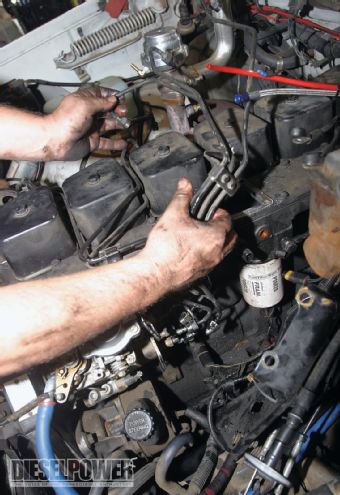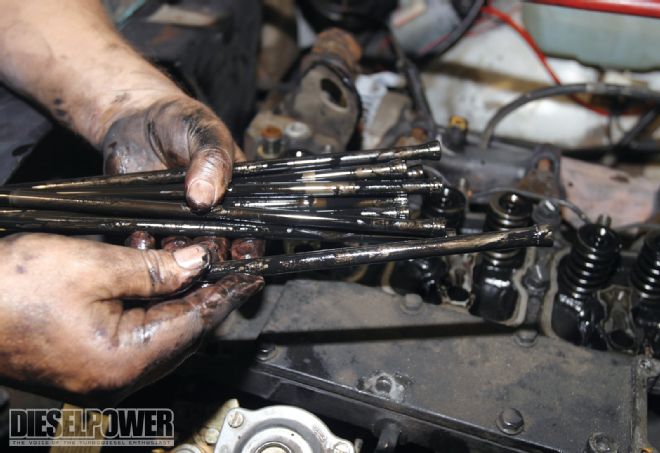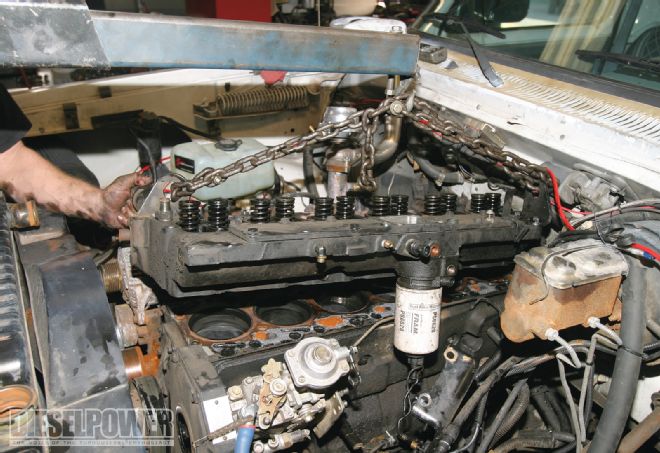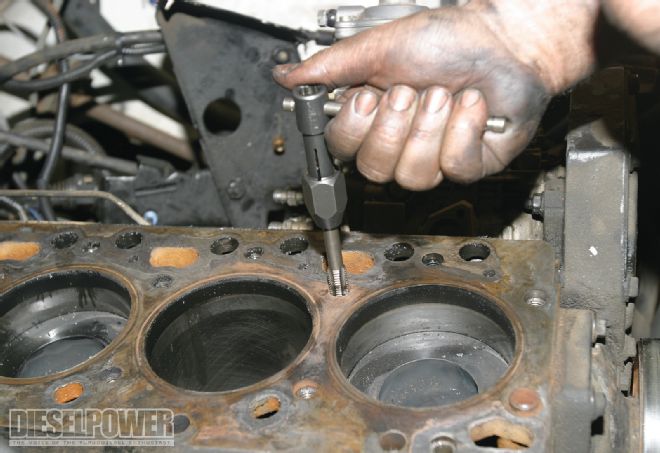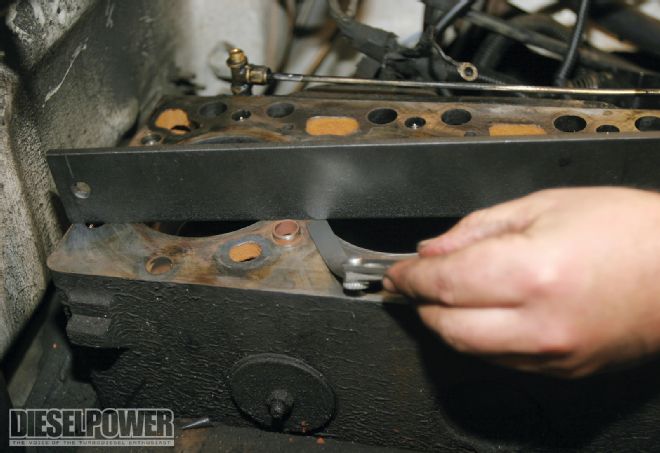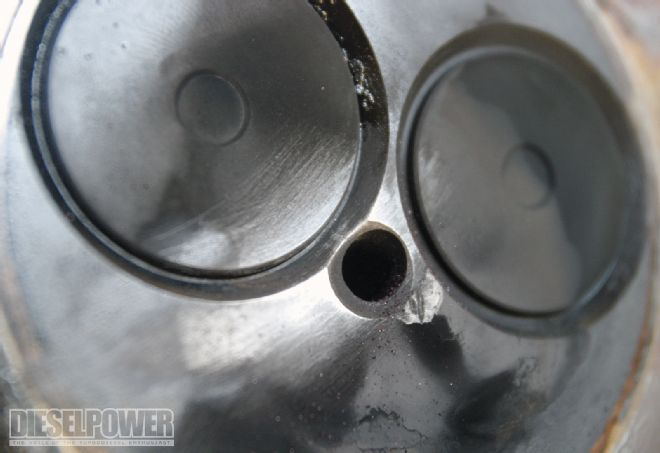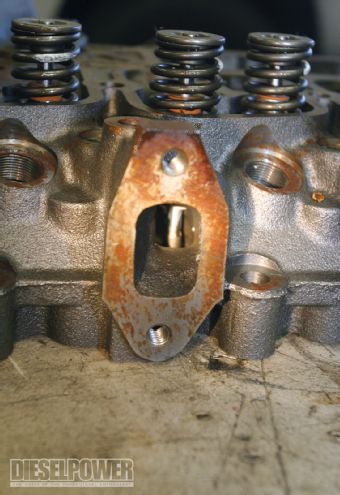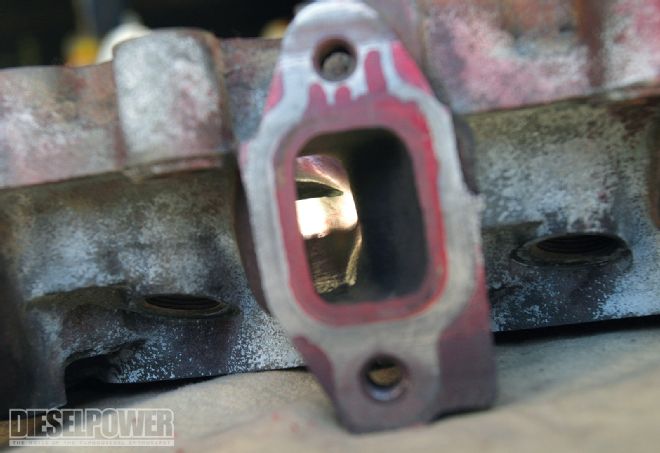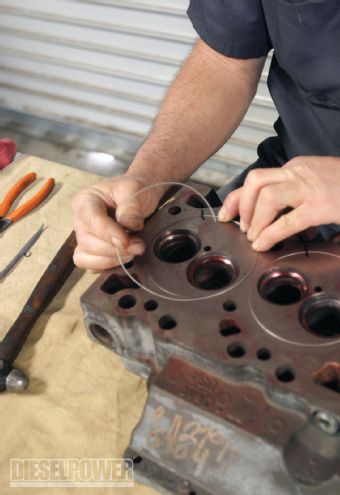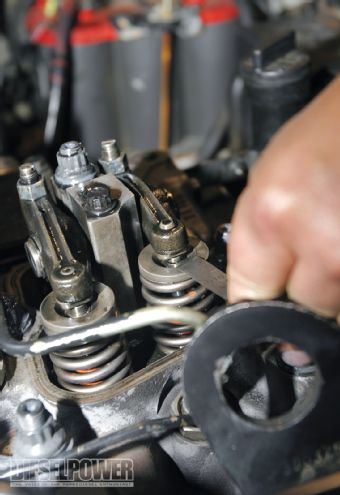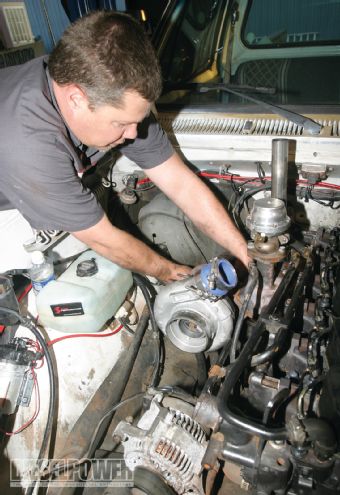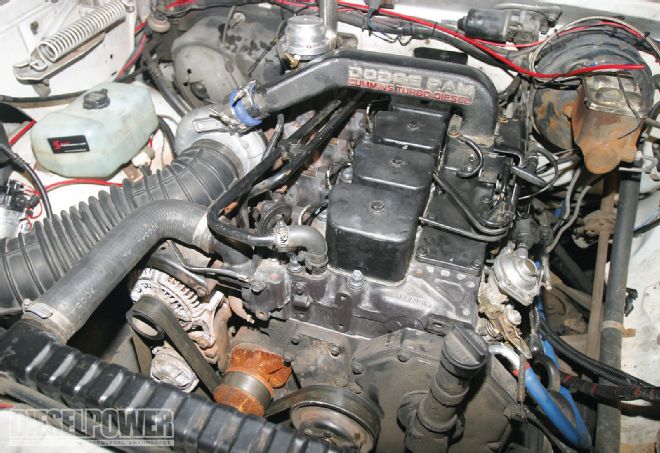When we last left Project Rust Bucket, it was making 312 hp at the wheels on fuel, and 448 hp with stock re-torqued head bolts, 6x0.016 injectors, a single stage of nitrous, and a stock turbocharger with a 60mm High-Tech Turbo compressor upgrade. At this point, the truck had the potential to run 13-second quarter-mile times and still got about 20 mpg, all for a total investment of about $7,000-including the price of the truck. But there was more left on the table-a lot more.

| 1989 Dodge Ram D250 Upgrade j And H Performance
Rust Bucket's Weak Link
The problem was, our reliability was in question due to our stock head bolts and notoriously weak '89 Cummins head gasket. To rectify these problems, we decided to O-ring a '93 cylinder head and install it along with a 0.020 thicker head gasket courtesy of Pure Diesel Power, and a set of ARP head studs. With these modifications, we felt confident up to about 1,000 hp at the crankshaft, or about 700 hp at the wheels.
If you're thinking of tackling a job like this yourself, make sure you have a service manual for whatever year truck you're working on. It will save you a lot of headaches when you can't figure something out. As for us, we partnered up with J&H Performance in Redding, California, to do the job, since it had already built trucks that have made more than 1,000 hp with O-rings. For now, this story will be focused purely on the cylinder head upgrade. Keep in mind that the tips and tricks here will work on any '89 to '09 Dodge with the Cummins diesel engine.
In the next few installments of Project Rust Bucket, we'll bolt on the cylinder head, upgrade the turbocharger to a larger wastegated version, install a fuel system, and upgrade the nitrous to an NX two-stage setup. We'll also fix a few things that have been bugging us for a while, like our killer dowel pin, and a throttle linkage travel problem we've been battling.
How (Not) To Blow Your Newly Installed Head Gasket
In our travels through the diesel performance world, we've run across quite a few people who blow a head gasket within days or months of the original install. Many people don't realize that if your engine is equipped with studs and O-rings, you need to be careful with how they proceed after you've fired up the truck. Here's a few tips to make sure you're not the one leaking coolant everywhere.
Let The Truck Warm Up
By this we don't mean let it idle in the driveway for a few minutes-let the truck get up to its full operating temperature before giving it more than a quarter-throttle. When the engine is hot, the metal expands, creating better sealing. Flooring it right out of the driveway is just asking for trouble.
Re-Re-Re-Torque
Doing one re-torque on the cylinder head 10 minutes after your studs are first installed just isn't going to cut it. ARP recommends three additional re-torques after the initial tightening sequence, and we'd do the last one hot to make sure maximum clamping force is available when the engine is up to temperature. It's also good practice to take it easy for the first few hundred miles, then re-check the torque specs after the truck has been driven for a few weeks. After that, about once every six months is a good time to do a re-torque on the cylinder head.
Bad O-Rings
It is possible for O-rings to be installed incorrectly, which is why it's good practice to use a shop experienced with the procedure. If the O-ring is installed incorrectly, or the O-ring's receiver grooves are machined in the wrong place, there may be no other option than to redo the job on another cylinder head.
